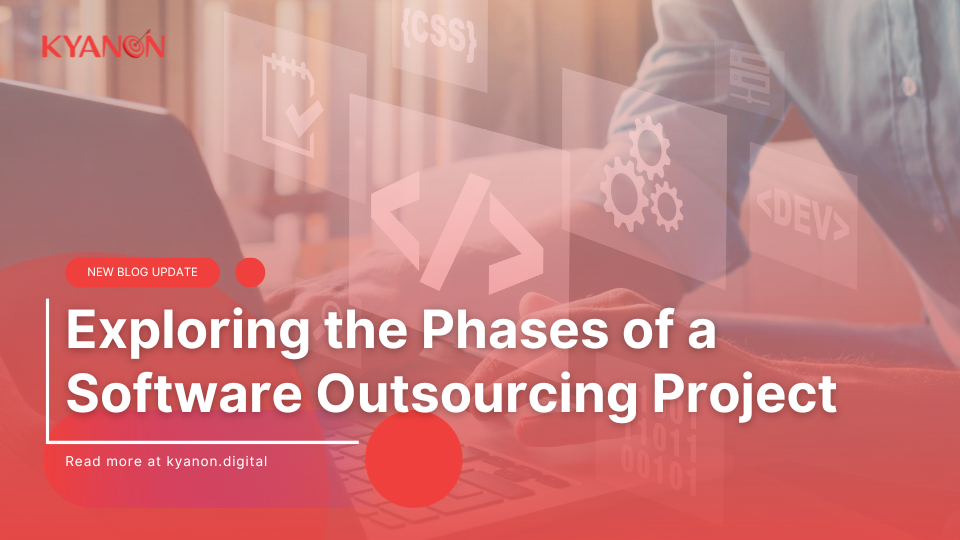Starting a software outsourcing project involves making a strategic choice that encompasses a process from conceptualization to actualization.Many companies are drawn to software outsourcing due to its disciplined approach. The stages in the software development outsourcing journey include: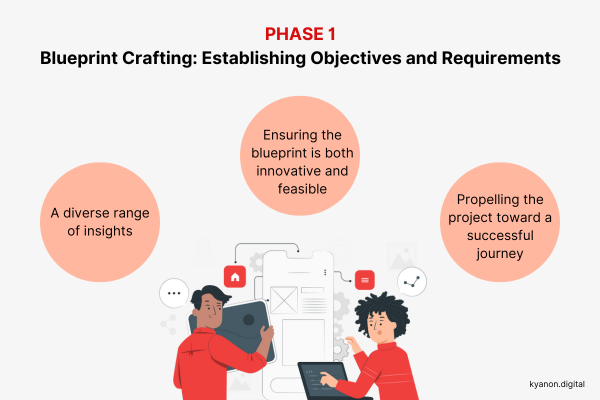 The phase of gathering goals and requirements is pivotal, where executives strategically map out the project’s objectives and requisites. This roadmap serves as the foundation for the upcoming software development journey.It is crucial to have a clear understanding of the project goals, target audience, and critical features before entering into collaboration with an outsourcing development service. This initial comprehension facilitates a more effective evaluation of outsourcing partners, ensuring alignment with the project’s needs and a compatible selection of the outsourcing model based on the organization’s internal capabilities.
The phase of gathering goals and requirements is pivotal, where executives strategically map out the project’s objectives and requisites. This roadmap serves as the foundation for the upcoming software development journey.It is crucial to have a clear understanding of the project goals, target audience, and critical features before entering into collaboration with an outsourcing development service. This initial comprehension facilitates a more effective evaluation of outsourcing partners, ensuring alignment with the project’s needs and a compatible selection of the outsourcing model based on the organization’s internal capabilities.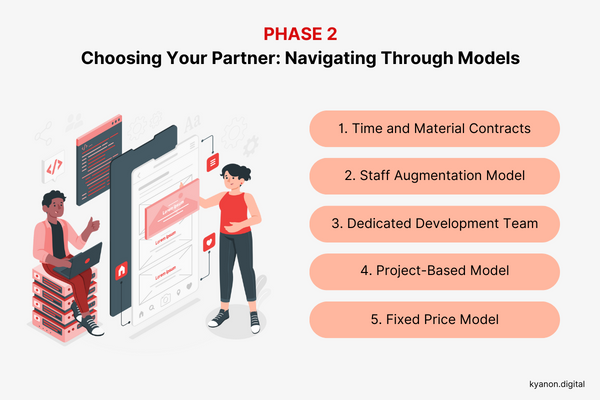
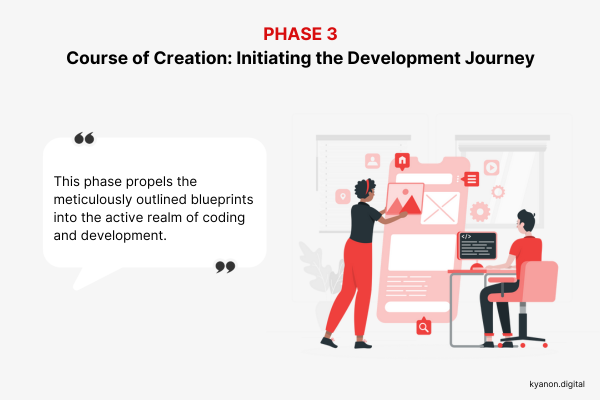
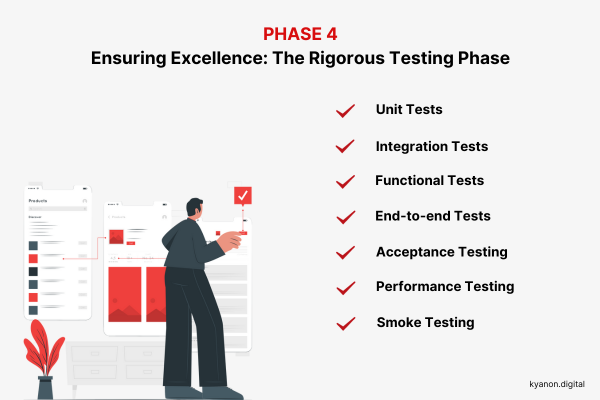
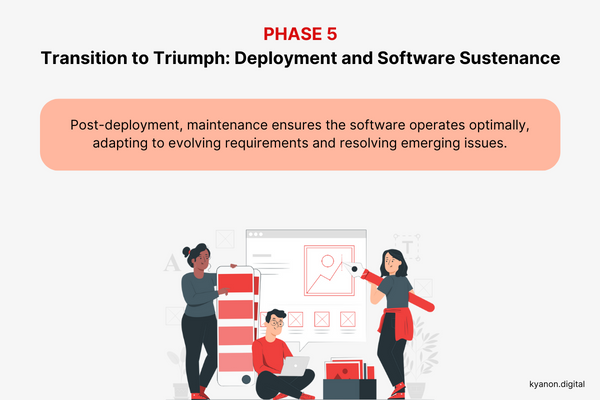
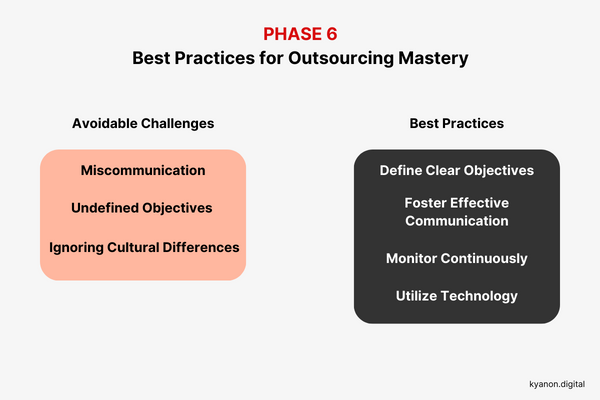
- Blueprint Crafting: Establishing Objectives and Requirements
- Choosing Your Partner: Navigating Through Models
- Course of Creation: Initiating the Development Journey
- Ensuring Excellence: The Rigorous Testing Phase
- Transition to Triumph: Deployment and Software Sustenance
1. Blueprint Crafting: Establishing Objectives and Requirements
In the initiation phase of a software development project, it is crucial to meticulously gather and outline goals and requirements.This phase serves as the foundation for the project, establishing a clear path for the subsequent stages. Through a thorough analysis of needs, expectations, and scope, the project aligns with its ultimate objectives, ensuring a well-coordinated approach to attain the desired outcome.Engaging outsourcing software development services at this stage can offer:- A diverse range of insights
- Ensuring the blueprint is both innovative and feasible
- Propelling the project toward a successful journey
 The phase of gathering goals and requirements is pivotal, where executives strategically map out the project’s objectives and requisites. This roadmap serves as the foundation for the upcoming software development journey.It is crucial to have a clear understanding of the project goals, target audience, and critical features before entering into collaboration with an outsourcing development service. This initial comprehension facilitates a more effective evaluation of outsourcing partners, ensuring alignment with the project’s needs and a compatible selection of the outsourcing model based on the organization’s internal capabilities.
The phase of gathering goals and requirements is pivotal, where executives strategically map out the project’s objectives and requisites. This roadmap serves as the foundation for the upcoming software development journey.It is crucial to have a clear understanding of the project goals, target audience, and critical features before entering into collaboration with an outsourcing development service. This initial comprehension facilitates a more effective evaluation of outsourcing partners, ensuring alignment with the project’s needs and a compatible selection of the outsourcing model based on the organization’s internal capabilities.2. Choosing Your Partner: Navigating Through Models
Choosing the right outsourcing model is crucial for transforming a concept into a dynamic software reality. Each model brings forth distinct advantages, carefully designed to meet diverse project demands and organizational structures.Embark on this exploration to find the model that resonates with your project’s fundamental essence, guiding you closer to the realization of your envisioned software masterpiece.
2.1. Time and Material Contracts
Designed for projects with evolving requirements, this model promotes flexibility and iterative progress. It adeptly accommodates changes, maintaining continuous alignment with the evolving project objectives. Particularly suitable for long-term projects susceptible to changing requirements over time.Well-suited for businesses that:- Demand a more agile approach to software testing
- Prioritize flexibility across projects and teams
- Seek complete visibility of budgets and testing processes
2.2. Staff Augmentation Model
Tailored for businesses seeking to augment their teams with specialized expertise while retaining managerial control, this model enables a seamless extension of your in-house team. Staff Augmentation model effectively integrates additional expertise to expedite project progress.Well-suited for businesses that:- Require additional assistance on single or multiple projects
- Experience seasonal fluctuations and expectations
- Engage in continuous or complex projects
2.3. Dedicated Development Team
Tailored for extensive projects, this model provides a dedicated team from the outsourcing partner exclusively focused on your project. Dedicated Development team nurtures a collaborative environment conducive to achieving project objectives, ensuring a concentrated and coordinated approach towards project completion.Well-suited for businesses that:- Seek budget-friendly project solutions
- Need a long-term business partner with an expert web software testing team
- Desire a dedicated team aligned with business goals
2.4. Project-Based Model
Crafted for projects with clearly defined requirements and deadlines, this model encompasses all project deliverables from conceptualization to deployment, providing a comprehensive turnkey solution. It proves to be an excellent choice for businesses with well-defined project objectives seeking an end-to-end solution.Well-suited for businesses that:- Prefer predetermined budgets and scopes
- Operate within extremely tight deadlines
- Have predefined objectives, project outlines, and milestones
2.5. Fixed Price Model
Ideal for projects with a well-defined scope and fixed budgets, this model establishes a fixed price for the entire project, promoting budget adherence and financial predictability. It eliminates financial surprises, ensuring a smooth execution within the defined budget.Well-suited for businesses that:- Operate within a limited, fixed budget
- Have a well-defined scope with resource limitations
- Seek a project with predictable costs
3. Course of Creation: Initiating the Development Journey
As the stages of a software outsourcing project unfold, commencing the development journey becomes a crucial step. This phase propels the meticulously outlined blueprints into the active realm of coding and development. Venturing into this stage requires a robust strategy, ensuring proficient attention to every facet of the software development process.
4. Ensuring Excellence: The Rigorous Testing Phase
In the process of software development, testing stands as a pivotal stage, guaranteeing the software’s reliability, functionality, and preparedness for deployment.This phase meticulously examines the developed features and functionalities to confirm their alignment with desired standards and expectations. The testing process includes the following types of testing.
4.1. Unit Tests
These are crucial as they validate individual components or units of code in isolation, establishing a robust foundation for the overall functionality and integrity of the system.4.2. Integration Tests
Conducted to evaluate the interaction between different components or systems, these tests ensure seamless communication and functionality when combined, playing a pivotal role in ensuring the software’s reliability.4.3. Functional Tests
Aimed at validating the software’s behavior against predefined applicable requirements, functional tests ensure it responds correctly to specific inputs and performs actions as expected, aligning with user requirements.4.4. End-to-end Tests
These tests assess the system’s overall performance, ensuring all integrated components work harmoniously from start to finish. They comprehensively evaluate the software’s functionality.4.5. Acceptance Testing
This phase confirms that the software meets agreed criteria and is ready for deployment. It ensures alignment with client expectations and readiness for the market.4.6. Performance Testing
Involving the assessment of the software’s stability, responsiveness, and speed under various conditions, performance testing ensures robustness and reliability in real-world scenarios.4.7. Smoke Testing
Before delving into more detailed testing phases, smoke testing performs basic tests to check the software’s stability and major functionalities. It ensures readiness for further scrutiny and validation.5. Transition to Triumph: Deployment and Software Sustenance
The deployment stage marks the transition of thoroughly tested software into a live environment, prepared to serve its intended users. Post-deployment, maintenance ensures the software operates optimally, adapting to evolving requirements and resolving emerging issues.
6. Best Practices for Outsourcing Mastery

6.1. Avoidable Challenges
- Miscommunication: Develop a clear communication strategy to forestall misunderstandings that could disrupt the project.
- Undefined Objectives: A well-articulated vision is essential. Ensure each goal and requirement is meticulously defined to prevent scope creep.
- Ignoring Cultural Differences: Embrace and respect cultural nuances to nurture a harmonious working relationship.
6.2. Best Practices
- Define Clear Objectives: Establish measurable objectives as the guiding force for your project.
- Foster Effective Communication: Engage in open and regular communication to promote collaborative synergy and alignment.
- Monitor Continuously: Keep a vigilant eye on the project’s progress, adapting strategies for smooth navigation towards your goals.
- Utilize Technology: Incorporate modern project management tools to streamline processes, facilitate real-time collaboration, and ensure everyone stays on the same page.
5/5 - (1 vote)
